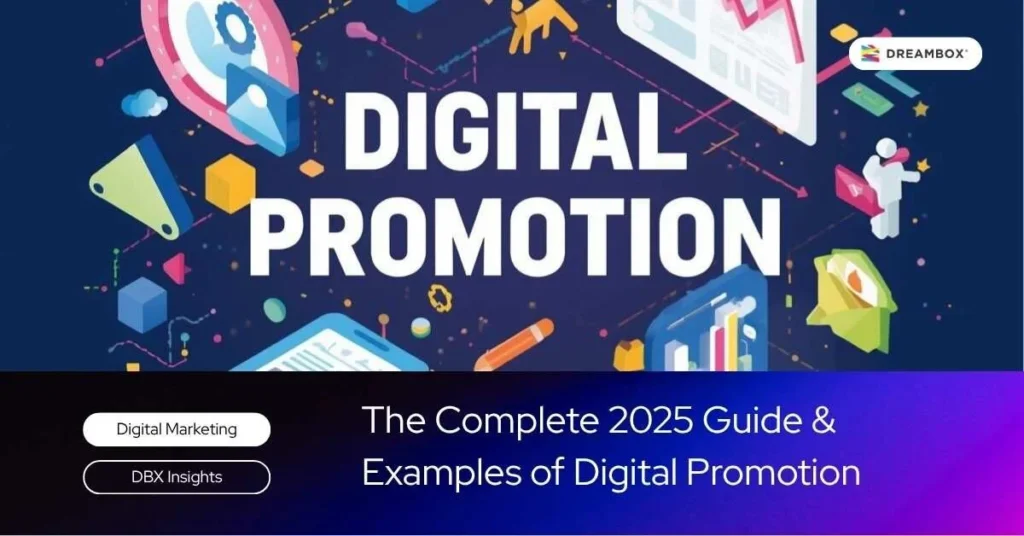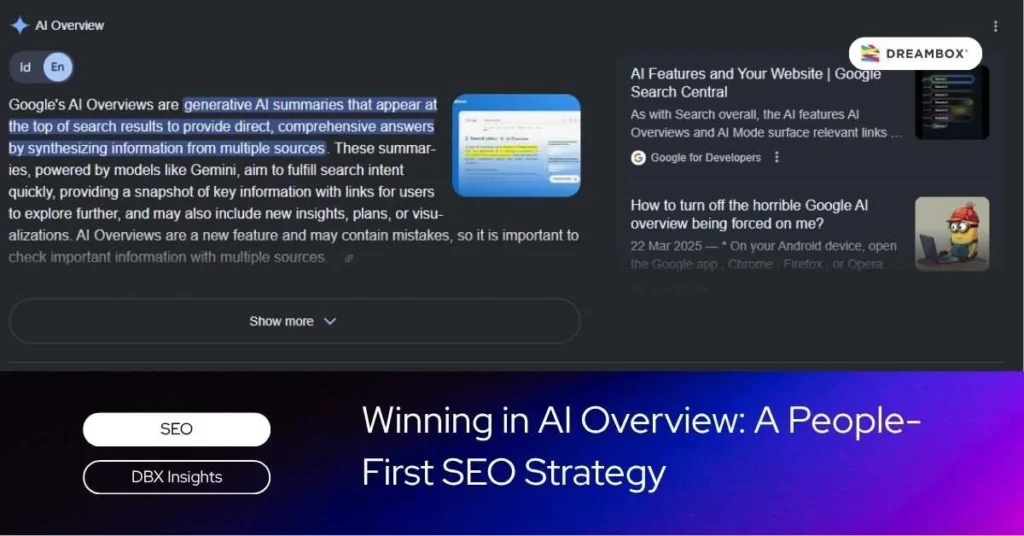In SEO, keyword research serves as the foundation of a solid strategy. Through research, teams can map audience intent, organize topics into clusters, and identify opportunities with low competition but high traffic potential.
In this article, we will discuss keyword research methods, techniques for analyzing opportunities, and strategies for creating targeted content to support website growth.
Key Takeaways:
- Keyword research is a crucial first step to ensure your SEO strategy is targeted and relevant to audience needs.
- A systematic approach, from intent analysis to clustering, helps create precise and long-lasting content.
- With Dreambox SEO services, research findings can be transformed into a consistent content strategy that drives traffic and conversion opportunities.
What Is Keyword Research?
Keyword research is the process of understanding the terms people search most frequently on Google.
This allows you to understand how your audience searches for relevant information, products, or services. Research results help tailor content for easier discovery, increasing the chances of generating consistent, high-quality organic traffic.
Schedule a free 30-minute branding consultation session with our experts.
Recommended Tools
Choosing the right tools makes the research process more efficient. Each tool has different functions and levels of data depth, so their use should match your needs.
1. Free Tools
Google Search Console, Google Keyword Planner, and Google Trends are sufficient for basic keyword, trend, and idea analysis. While their features are limited, official Google data remains highly relevant for beginners.
2. Paid Tools
Ahrefs and Semrush provide comprehensive data, including search volume, keyword difficulty (KD), CPC, and competitor analysis. Keyword Insights is useful for clustering, while AlsoAsked and AnswerThePublic provide ideas for frequently asked questions.
3. When to Use Which
For initial research, free tools are enough to understand keyword direction. For more in-depth or large-scale strategies, paid tools offer detailed and precise data.
9 Practical Steps to Keyword Research
To research keywords effectively, follow these steps using the topic “LinkedIn Ads Agency” as an example:
1. Determine Goals & KPIs
Set primary goals, such as generating B2B leads, ranking in the top 3 on Google for “LinkedIn Ads Agency,” or increasing CTR. This makes your SEO strategy measurable.
2. Collect Keyword Candidates
Compile a list of relevant keywords, including “LinkedIn Ads Agency” and derivatives. Differentiate between brand keywords like “LinkedIn Ads” and non-brand keywords like “LinkedIn advertising services.”
3. Key Metric Values
Check search volume, KD, CPC, and 12-month trends for keywords like “LinkedIn Ads Agency Indonesia.” This data helps select realistic and promising keywords.
4. SERP Analysis
Analyze search results for “LinkedIn Ads Agency” to identify user intent. Determine whether the results focus on service pages, strategy articles, or People Also Ask questions.
5. Cluster & Priority
Group keywords by topic, such as “services/agency,” “LinkedIn Ads strategy,” “LinkedIn advertising costs,” and “LinkedIn targeting.” Prioritize keywords with high potential to generate leads.
6. Content Mapping
Create a content map. A pillar page could be “LinkedIn Ads Agency Indonesia” as the main service landing page, supported by cluster pages like “LinkedIn Ads Costs,” “LinkedIn Ad Strategy,” and “LinkedIn Targeting.”
7. Brief On-Page
Create a technical brief with a title of 60 characters or less containing the primary keyword, a strong H1, H2s reflecting search intent, FAQs from People Also Ask, and internal links to service pages.
8. Quick Wins
Identify long-tail keyword opportunities, such as “LinkedIn Ads Agency Jakarta” or “LinkedIn Ads services Indonesia.” These keywords typically have lower competition but higher conversion potential.
9. Publication & Evaluation
After publishing content, monitor performance in Google Search Console, including search queries, average position, and CTR. Iterate content, add internal links, and re-optimize as necessary.
Mandatory Minimum Data Collected
Key data must always be collected for strategy development: primary keyword, search intent, topic clusters, volume, KD, CPC, trends, priority, content type, target URL, and supporting insights for measurable execution.
Common Mistakes in Keyword Research
To make your SEO strategy more effective, here are some things to avoid.
1. Chasing Volume, Ignoring Intent
Targeting only high-volume keywords may drive traffic but fail to convert.
2. Skipping SERP/AI Overview
Ignoring search results analysis can mislead content strategy. SERP and AI overview clarify what Google considers relevant.
3. No Clustering or Internal Linking
Collecting keywords without clustering or linking reduces content synergy and indexing effectiveness.
4. No Content Updates & Cannibalization
Unupdated content loses ranking, and multiple pages targeting the same keywords can hurt performance.
Optimize Your Keyword Research with Dreambox
Systematic keyword research builds a strong, sustainable SEO foundation. With proper keyword research, organic traffic growth accelerates and conversion opportunities increase.
For a more targeted strategy, trust Dreambox SEO services for opportunity audits, clustering, and measurable content execution.
Visit our SEO Agency page or contact us for consultation, and explore related articles on DBX Insight to deepen your SEO knowledge.












